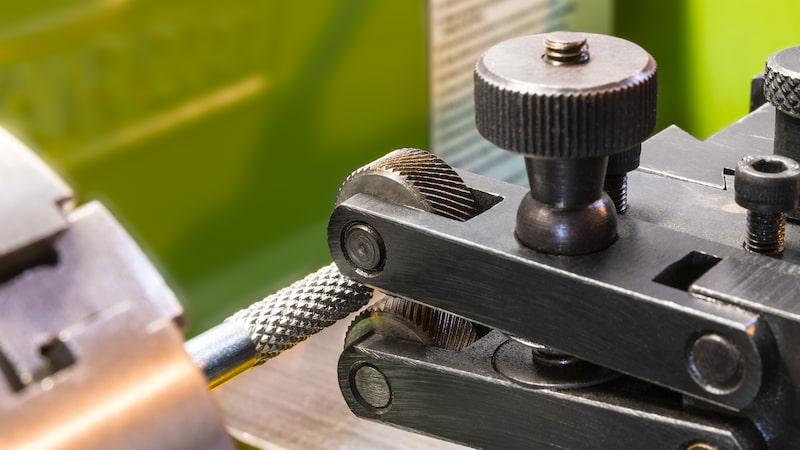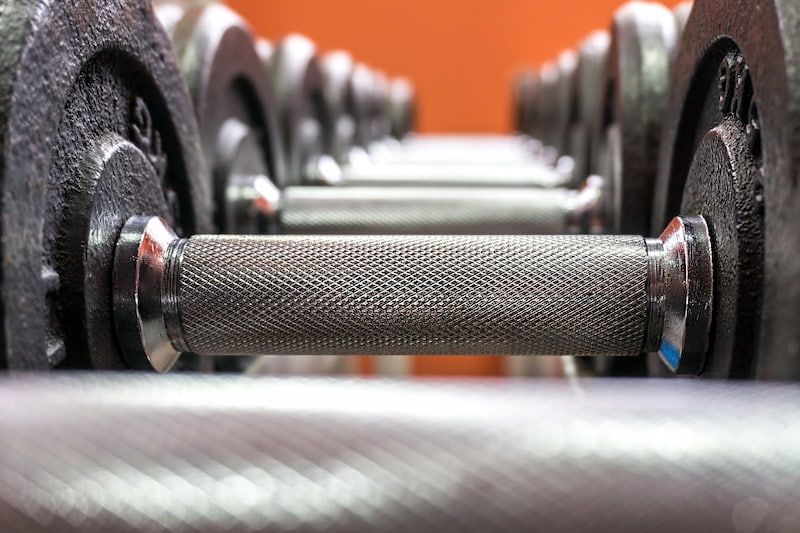Knurling is a post-finishing process wherein a textured pattern is created on the surface of a workpiece.
Early knurling processes were performed by hand, but the introduction of turning and milling machines has made it possible to create more precise and complex designs.
Let’s discuss how knurling works, its methods, and its applications.
What Is Knurling?
Knurling is a manufacturing process that deforms a workpiece, or a section of it, to achieve a rough patterned surface. It is mostly performed on round or cylindrical parts, but in some cases, is performed on flat surfaces as well.
The patterns are created by cutting or forming the surface material. Different patterns require various knurling tools to achieve the desired appearance that fits the application and material.
Knurling patterns include a combination of vertical, horizontal, or angled lines. The most common patterns include:
-
Straight – composed of horizontal or vertical lines.
-
Diagonal – straight lines either sloped to the right or left (usually at 30°).
-
Diamond – a combination of right and left-sloped lines to the workpiece.
Other knurling patterns include square, beveled, concave, and convex knurls.
Knurls also have types based on their location:
-
Band – across a certain area of the workpiece.
-
Full – the whole surface area is knurled.
-
Internal – knurling on the internal diameter.
-
Face/Milling – on the flat surface of the workpiece.
-
Tapper – conical knurl at the end of the workpiece.
- Personal account manager
- Quality assurance
- Payment terms for companies
- On-time delivery by Fractory
Knurling Applications – When Is Knurling Used?
Most people have encountered knurled surfaces in gyms on barbell bars or when playing darts, for example.
But knurling has countless applications beyond these examples that are utilised across various industries such as manufacturing, jewellery, electronics, repair, and art.
-
Manufacturing – Knurling components add ridges that enhance the surface friction of the material. The ridges in these components allow for improving the linkage of assemblies. Some applications include tool handles, pistons, nuts and bolts.
-
Consumer electronics – Small knobs and dials which are common in home appliances add functionality, better grip, and aesthetic looks.
-
Jewellery and arts – Attractive knurling designs have made their way to decorative patterns, wedding rings, bands, and even common household materials.
-
Repair – The rolled-in knurled surface has raised areas surrounding the depressed areas which can make up for wear on the part. Thus, knurling is sometimes used as a repair method but it’s not as common nowadays as sourcing spare parts might be the cheaper option. It was quite common for worn-out piston cylinders to be knurled for further operation.
Which Materials Can Be Knurled?
-
Metal – common metals include mild steel, aluminium, brass, stainless steel, etc. Harder metals are more difficult to indent and are thus generally machine knurled.
-
Plastic – the process of knurling plastics requires a more delicate approach since the material has a lower heat resistance and is much more susceptible to failure.
-
Wood – wood can be knurled but the process isn’t as simple as it is for various metals. Knurling really only works for hard woods and is limited to simple patterns with checkering being the most common method.
Knurling Process
The process of creating a knurled pattern on the surface material is done by using knurling wheels or dies. These tools are pressed onto the workpiece, subjecting it to deformation to create intricate designs.
Some parameters to keep in mind before starting the process are pitch, angle, hole diameter (internal knurling), knurl and blank diameter, face width, and grade (teeth per inch).
The knurling process is carried out in two ways – either by hand or through a machine.
Hand Knurling
Hand tools are pressed against the workpiece in order to deform the metal and create specific patterns. A small roller tool is used to create these indentations on the workpiece. These tools come in different patterns and designs depending on their application.
Hand knurling is a great option for smaller projects as it is more economical to have a knurling tool than a lathe machine. An example of this is knurling a small metal pin to bite into the diameter of a plastic molding as it requires low precision.
Machine Knurling

Lathe machines made it possible to improve the process of knurling, CNC controlled turning machines have taken this precision and level of control even further.
The workpiece is clamped onto the lathe and a cutter or knurling wheel is pressed onto its surface. By manipulating the machine feed and RPMs, patterns with various dimensions can be created. The tool chips away material as the workpiece rotates along the lathe, creating a rough pattern. This method is faster and more precise than hand knurling, especially for repetitive projects.
It is essential to have the workpiece at the center of the lathe in order to have a precise output. This method, however, generates a lot of heat from the constant revolution of the workpiece as its surface makes contact with the roller. Oil or other lubricants are used to prevent the workpieces from flaking, galling, and sticking (accidental welding) to the knurling tool.
Milling machines can be used for knurling but the machines are basically programmed to act like lathes with the aid of Computer-Aided Manufacturing (CAM) software. However, milling machines are suitable for creating patterns on flat surfaces.
Wrapping it Up
Knurling continues to evolve along with technological innovation as it is equipped with better processes and machines. A great example of its development is the exploration of knurling and nanotechnology which results in unparalleled precision and efficiency.




